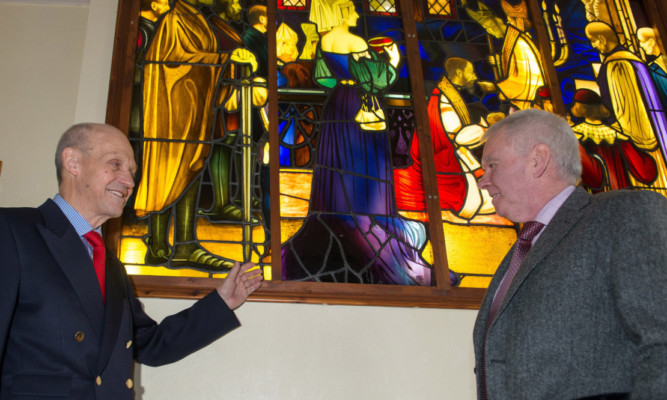A new book about Perth may help to solve the mystery of what became of an important piece of Scottish art.
The guidebook for the city, to be published in the autumn, has been written by the former provost of Perth and Kinross, Dr John Hulbert.
The hopes are his book may aid the search for the lost panel of a historic stained glass window.
The little-known but very valuable window depicts the coronation of King Robert the Bruce in Scone for the second time on March 29 1306.
The window, which is almost 10ft long by four feet high, was created as a special exhibit for the 1901 Glasgow International Exhibition by artist David Gauld (1865-1936), one of the highly-regarded Glasgow Boys.
Contemporary records indicate there were originally five panels in the window but only four remain.
These four panels were given to the Masonic Lodge at Atholl Crescent, Perth, in 1930.
Russell Logan, of the lodge, hopes publicity generated by the new guidebook will unearth information about the lost panel.
“The explanation for the two coronations is that, following the murder of Red Comyn in Dumfries, Robert the Bruce came north as quickly as possible and was crowned in Scone by Bishop Lamberton of St Andrews on March 27,” said Dr Hulbert.
“Two days later, however, Isabella, the Countess of Buchan depicted in the panel holding the circlet of gold appeared in Scone, claiming the hereditary right to crown the King of Scots.
“She was not a lady to be ignored and so, as most of Bruce’s party were still in Scone, the ritual was performed again on March 29,” he added.
Isabella paid dearly for her devotion. After the defeat of Bruce at Methven a few weeks later, she was captured and imprisoned in a cage in Berwick Castle for four years.
Dr Hulbert described the panel as an “important work of art, illustrating a fascinating episode in Perth’s and Scotland’s history, which should be better known by the people of Perth”. The window is on view each year at Doors Open Day and the lodge has agreed to lend it to an exhibition in Stirling to celebrate the 700th anniversary of the Battle of Bannockburn.
Photo by Angus Findlay Photographers
